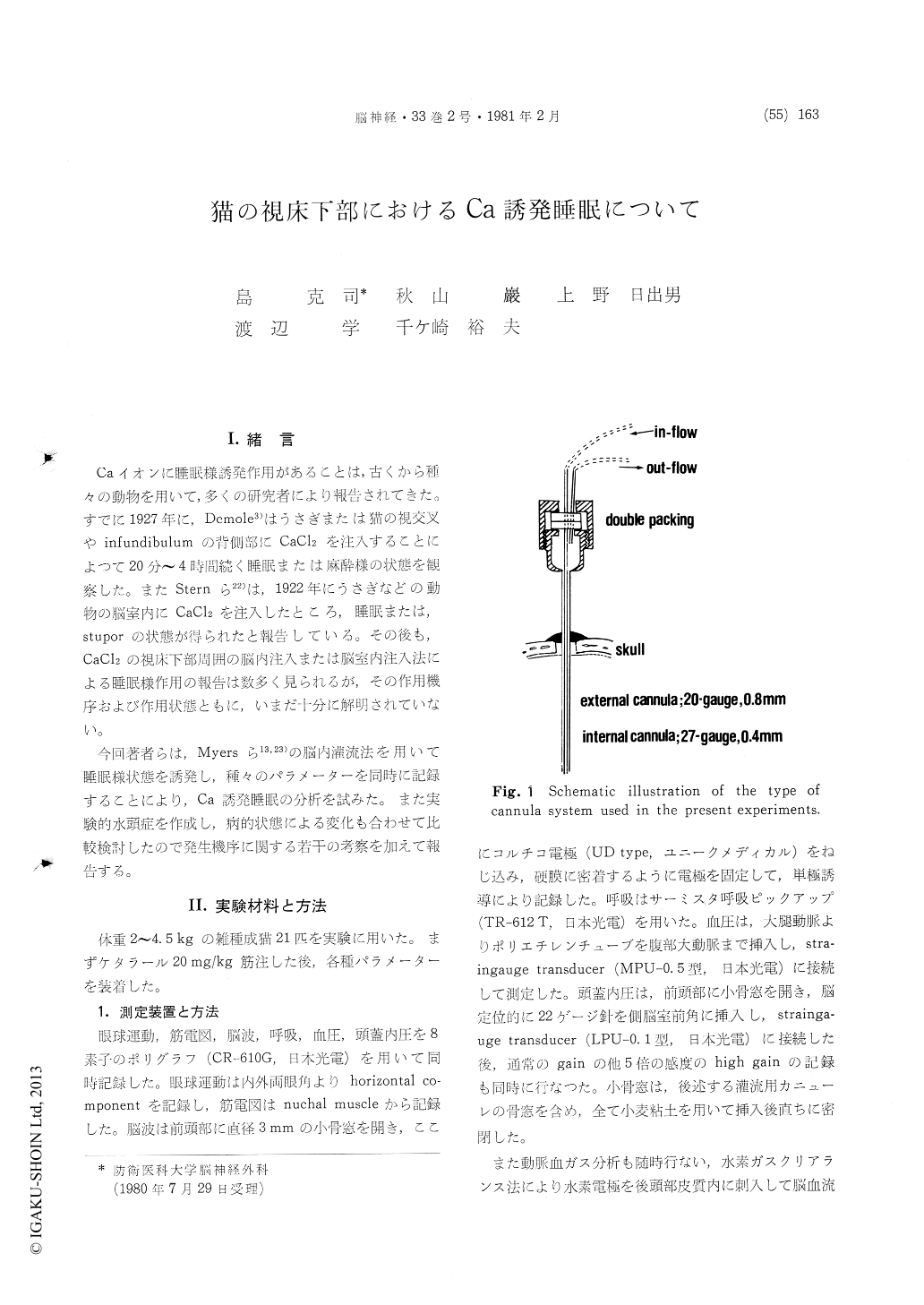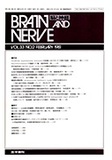Japanese
English
- 有料閲覧
- Abstract 文献概要
- 1ページ目 Look Inside
I.緒言
Caイオンに睡眠様誘発作用があることは,古くから種々の動物を用いて,多くの研究者により報告されてきた。すでに1927年に,Demole3)はうさぎまたは猫の視交叉やinfundibulumの背側部にCaCl2を注入することによつて20分〜4時間続く睡眠または麻酔様の状態を観察した。またSternら22)は,1922年にうさぎなどの動物の脳室内にCaCl2を注入したところ,睡眠または,stuporの状態が得られたと報告している。その後も,CaCl2の視床下部周囲の脳内注入または脳室内注入法による睡眠様作用の報告は数多く見られるが,その作用機序および作用状態ともに,いまだ十分に解明されていない。
今回著者らは,Myersら13,23)の脳内灌流法を用いて睡眠様状態を誘発し,種々のパラメーターを同時に記録することにより,Ca誘発睡眠の分折を試みた。また実験的水頭症を作成し,病的状態による変化も合わせて比較検討したので発生機序に関する若干の考察を加えて報告する。
Sleep-induced effect of calcium ions perfused with-in the hypothalamus was investigated in 21 cats.
The double-walled cannulae were inserted bilat-erally in the posterior region of the hypothalamus, particularly around the dorsomedial hypothalamic area. Modified Krebs-Ringer's solution contained the calcium ions alerted selectively upto about 4 times its normal value in extracellular fluid was perfused for 30 to 40 min. at a rate of 50μ/min. by means of the cannulae.
To analyse the effect of calcium polygraphic re-cording was performed. Ocular movements, the EMG of the nuchal muscle, EEG, respiration, sys-temic blood pressure and intracranial pressure were continuously monitored. The behavioral changes of the animals were also checked.
Effect of the calcium in pathological state was also studied using kaolin-induced hydrocephalus.
In 14 of 21 cats (67%) the behavioral and phys-iological sings such as sleep were demonstrated. In 12 of 14 cats these signs became apparent within 30±27min. following the start of perfusion. When sleep was setting in, short bursts of 6-8c/s slow wave of high voltage (150-250μV) or 8-12c/s spindle bursts of 100-200μV were noted. After few min. to several ten min. frequency of slow wave was rapidly increased.
In the stage of moderate sleep, 3-8c/s slow waves (100-250μV), and in deep sleep bursts of 1-2c/s slow waves (200-400μV) appeared.
These responses such as sleep were associated with the constriction of pupils, decrease in the physical activities, lowering of systemic blood pressure and decrease of the respiratory rate. The effects of calcium lasted as long as 2 to 3.5 hours in normal cats and 3 to 5.5 hours in hydrocephalic cats, and the behavioral and physiological characteristics of wakefulness retured fully. Normal cats showed thecontinuous sleep but half of hydrocephalic cats pres-ented intermittent sleep.
Definite REM sleep was not observed except for one cat.
It was discussed that ionic imbalance within the posterior region of the hypothalamus may control the cycle of sleep-wakefulness.

Copyright © 1981, Igaku-Shoin Ltd. All rights reserved.


